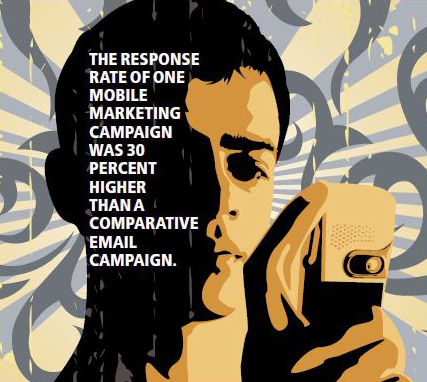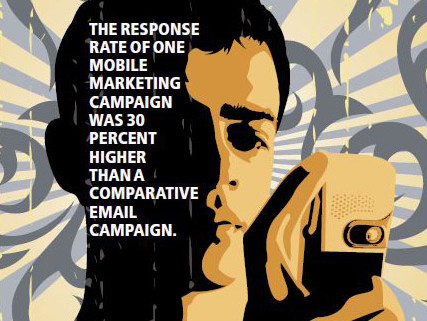Using Mobile Marketing to Build Sales and Customer Loyalty
Mobile marketing is constantly changing, and companies and businesses need to adapt to these changes or they are playing a game with fire that they will not win. Luckily, there are ways for marketers to adapt to today’s continuously changing mobile market, and business to business (B2B) marketers are learning how to take advantage of mobile and the untapped business opportunities that come with it.

Unfortunately, many marketers are uneducated in the uses and benefits of mobile. Yes, a lot have a general understanding of the subject, and they know it is important, but they have not refined their craft enough to the point where they are fully taking advantage of everything mobile has to offer. Some firms don’t even have a mobile marketing strategy in place. This is mind numbing to us! Fortunately, many marketers do have a mobile marketing strategy in place and have little confusion when it comes to starting it and extending it across all the channels they want it to cover. They’re getting better, but they are still learning where to focus and how to come up with a strategy that is wide enough for the entire business, yet narrow enough to work with each individual channel.
The smartphone opens up whole new realms for marketing because of its numerous capabilities. Along with the fact that they have touchscreens, cameras, and GPS, they are also in your customer’s hands all the time. Because of this, marketers now have the capacity to create experiences that did not exist before when providing content and creating a value exchange with audiences. This can also open up conversation and dialogue between you and your customers and potential customers, creating not only sales, but customer loyalty as well. Also, remember that over 50% of executives across the country use tablets, primarily in the mornings and evenings when they can look at more in-depth content. These people obviously have much more disposable income than the general population and need to be noted when putting together your mobile content.
You also want to remember that tablets are a “lean-back” experience, which means that users have much more time to consume and digest the information given to them. This means that tablets are prime real estate for white papers and videos. If you develop an app that targets the executives, or C-suite, you can provide new alerts when new pieces of information are available. An example would be to tailor your content based upon what your customers have told you they like or dislike in the past through your interactions. Apps also make it easier to share content and information with others, which is good for content distribution and driving more people to engage with you and your company.

You can also use apps at events for lead generation. Designing an app for an event that can help lead them around and inform them about the content your brand offers, where it is set up at the venue, and what speeches may be given on the subject. Apps can also provide alerts, set up contests, and drive people who have the app to interact with others and inform them of whatever new products or services you may be releasing or launching at the event. This not only helps the customer learn about your company, but it lets the customer engage with your company.
An example of a company that has done a great job of incorporating mobile marketing to help their company is Siemens. Siemens has an app for events and other interesting apps for products. In last year’s second quarter, they introduced a service app which allowed customers to scan a barcode for any industrial equipment they buy and pull relevant FAQs and/or manuals for that particular product right there on the spot. Customers could also take a picture of the product if there was something wrong with it, or the particular problem they were experiencing and send it in to Siemens so they can set up a customer service support request. This not only provided better support and service for their customers, but they also gained a lot of positive reviews from their customers in the process since it showed that Siemens was willing to go above and beyond to serve their customers.
Looking at mobile marketing from the top, B2B marketers can greatly improve their brand’s visibility and customer’s awareness through mobile marketing, and this will only cause the brand to generate more leads. Once you’ve secured a bunch of leads, mobile can also help marketers be more efficient when dealing with prospects in the sales funnel. The revenue is generated by creating more customer interactions and sales opportunities.
From the bottom, mobile marketing will provide efficient customer service and support. This will naturally build loyalty among your customer base. If your products and/or services are truly delivering value to your customers at the bottom of the sales funnel, you will assuredly generate interest at the top of the sales funnel.









I can only speak of our limited pilot campaigns, but the text results we approaching 3x’s the comparison with email blasts messaging the same exact information. Perhaps it’s timing or the industry (food service?)